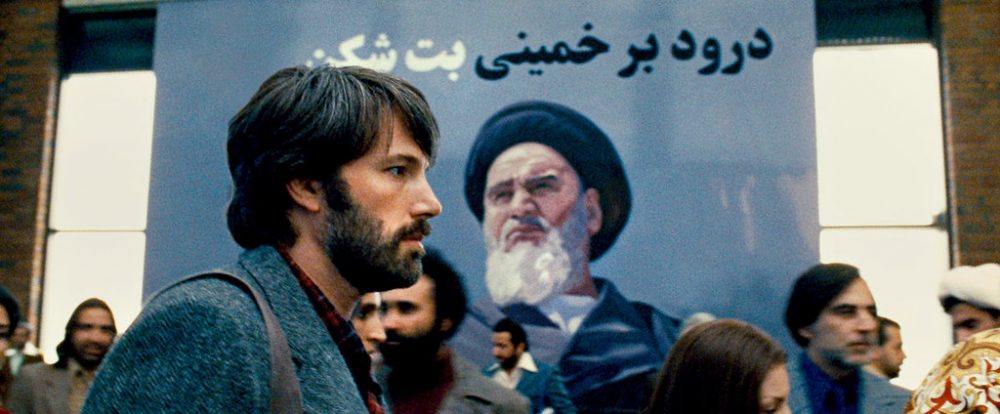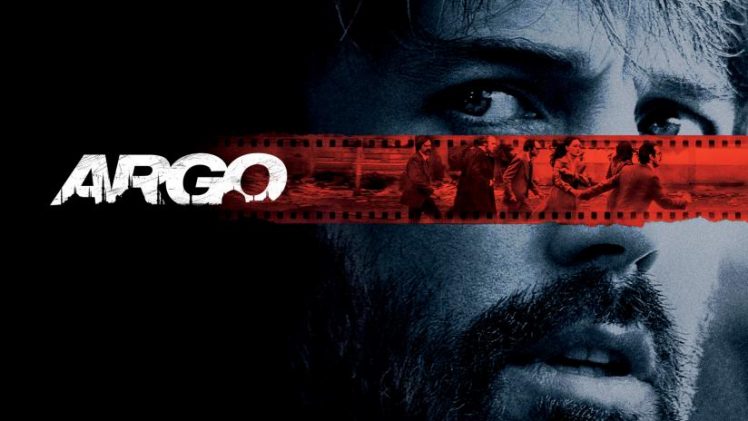In Argo, Ben Affleck directs himself as a CIA agent who goes by the name Kevin Harkins, who played an instrumental role in helping six Americans escape Iran following the events of the 1979 Iranian Revolution.
The movie opens by giving us a little history lesson about Iran. How the United States had a hand in organizing a coup that resulted in the ousting of Prime Minister Mohammad Mossadegh in the early 1950s, replacing him with Shah Pahlavi, who ruled Iran, pissing off its citizens, for the next several years. Cut to 1979 with things coming to a boil and the Shah being forced out of Iran (replaced by Ayatollah Khomeini) and being given asylum in the United States. The Iranian people were none too pleased with the US, wanting the Shah returned to Iran where he can face justice. With the Americans unwilling to turn over the Shah, a group of angry Iranians stormed the American embassy, taking nearly 70 hostages. Six Americans managed to flee out a back door, taking refuge in the home of a Canadian ambassador. They remained there for the next several weeks, waiting to be rescued.

Source:nytimes.com
Here’s where we meet up with Harkins. The CIA are brainstorming ideas to get the six Americans out alive before the Iranians discover them. Ideas include pretending they are school teachers (even though there are no registered American school teachers in Iran at the time) to giving them bicycles which they could ride 300 miles to the nearest border. This is where Harkins comes up with the plan of a pretend movie that is being shot (for pretend) in Iran by a Canadian film crew — with the Americans posing as the crew. Although the idea is initially met with skepticism, it is eventually given the green light and Harkins goes about setting up a movie. He makes contact with a friend in Hollywood (John Goodman) who hooks him up with a big shot producer (Alan Arkin). They go through some undeveloped scripts and setting on a sci-fi fantasy called “Argo”. They arrange for some media coverage (to give the movie credibility), make up a movie poster, set up a production office and get to work on their rescue. Harkins flies over to Iran to rendezvous with the Americans. He gives them their fake Canadian passports and their backstories and they’re on their way. The only question remaining is if their ruse will work.
The first 30 minutes of Argo provide a good history lesson, giving the how and why of what happened. By the time the movie gets to the Hollywood plan, the movie becomes more comical, focusing on the hijinx of creating a fake movie, while still reminding us of the stakes. Then the final 30 minutes provide the thriller that I was expecting the rest of the movie to be. And I will say that I was on the edge of my seat for the last several minutes. The problem for me was that the movie excelled at it’s individual parts but, when added together, they only made a good (not great) movie.
On the political side of things, the only two members of the cast that really stood out were Affleck and Bryan Cranston. And maybe Kyle Chandler — but only because his hair in the movie was awesome. On the comedic side, but John Goodman and Alan Arkin were fantastic. This was the part of the movie that worked best for me — even though I don’t think it was supposed to. As for the rest of the cast — mostly the hostages — I never really felt I got to know them. The movie was mostly about Affleck, with everybody else taking a back seat.
Like I said, Argo is a good movie. I wouldn’t expect big things to come from the movie come awards season, but it’s most definitely worth seeing if you’re interested in recent American history. And be sure to stay through the credits for more history — with actual photos of those involved providing context and really bringing the power of the story home.






